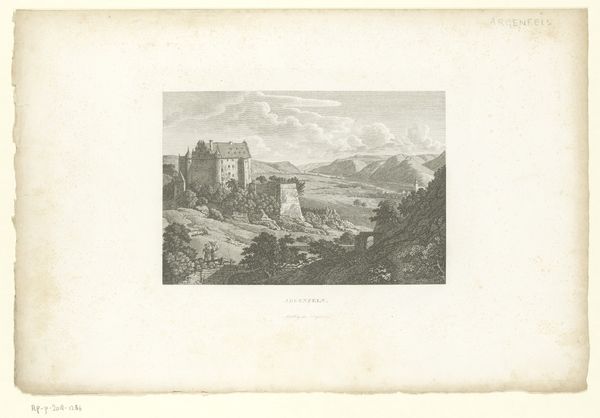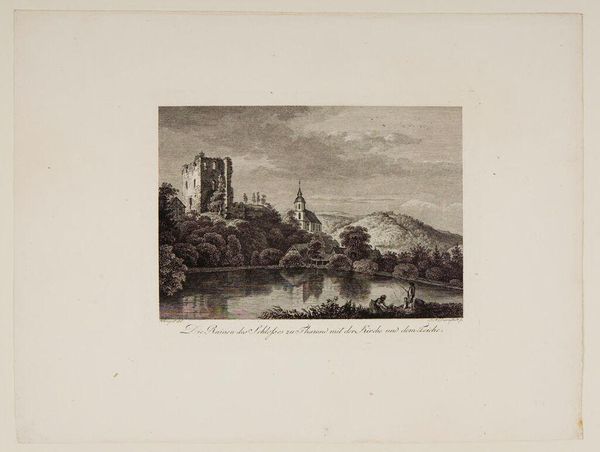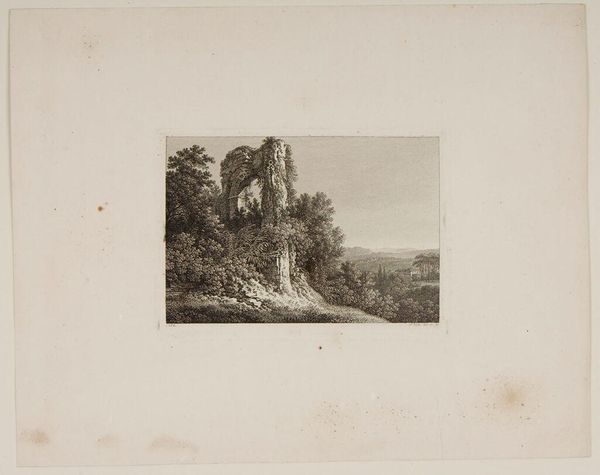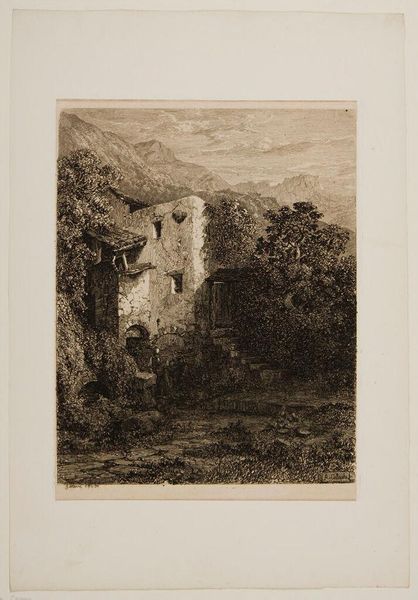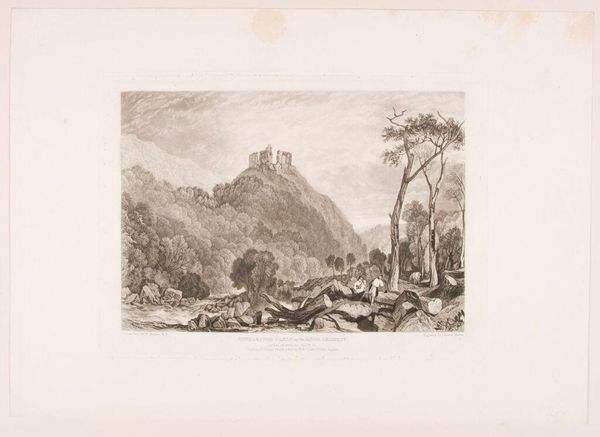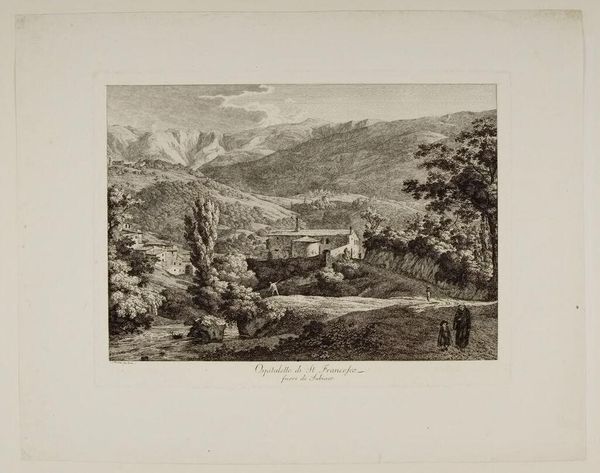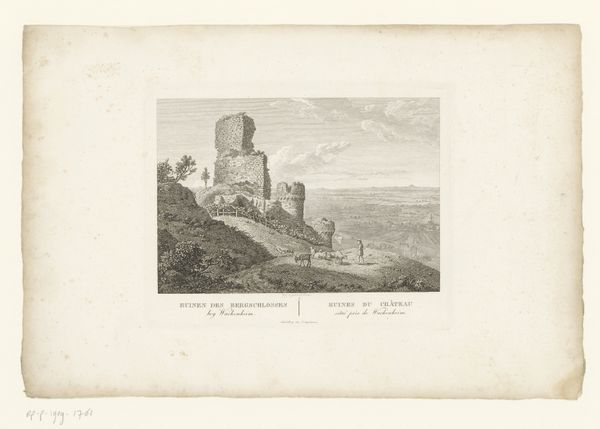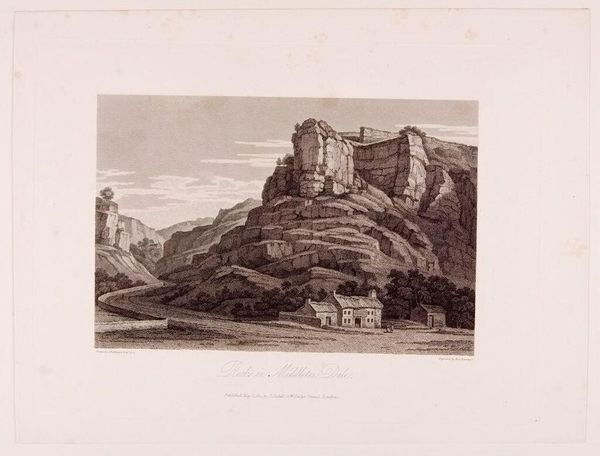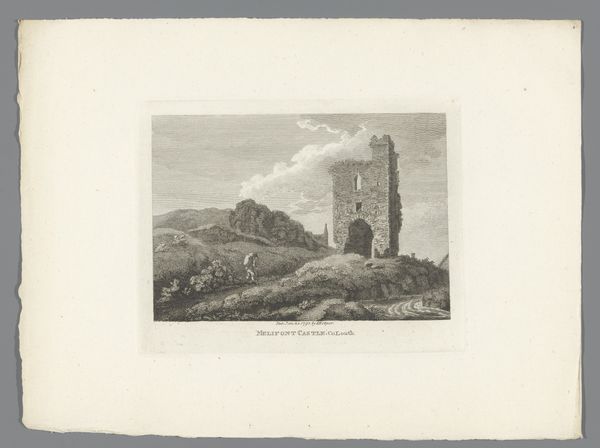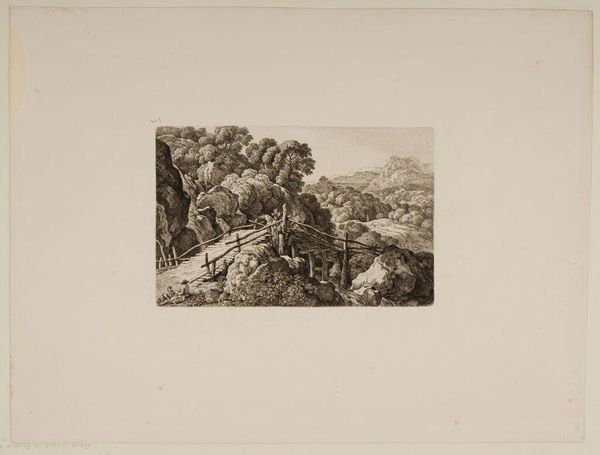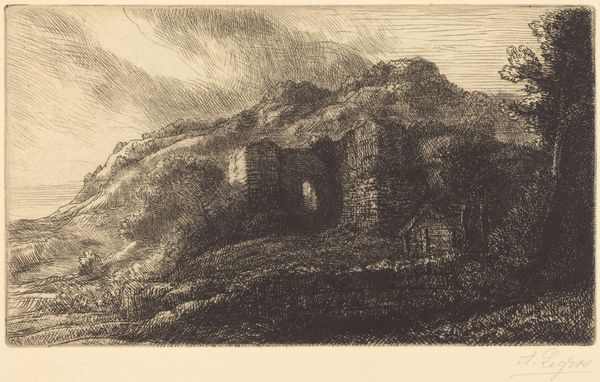
Copyright: CC0 1.0
Curator: Gazing at Johann Adolph Darnstedt's "Ruins of Tharandt," one is immediately struck by a sense of melancholy, almost romantic ruin. Editor: I get that, the sepia tones amplify the sadness, don’t they? It's like a lost memory, a world we can no longer access. Curator: Absolutely. Think about what ruins signified in the late 18th and early 19th centuries. They weren't just broken buildings; they represented the decay of feudal power structures and the rise of new social orders. Darnstedt, born in 1769, would have been acutely aware of these shifts. Editor: So, this idyllic scene isn't just pretty; it's a commentary on power and history? Curator: Precisely. The crumbling castle, juxtaposed against the serene landscape, speaks volumes about shifting socio-political landscapes and ideologies. Editor: Well, it certainly makes you think differently about a seemingly simple landscape. Thanks for adding that context. Curator: My pleasure. Art is always in conversation with its time, isn't it?
Comments
No comments
Be the first to comment and join the conversation on the ultimate creative platform.
